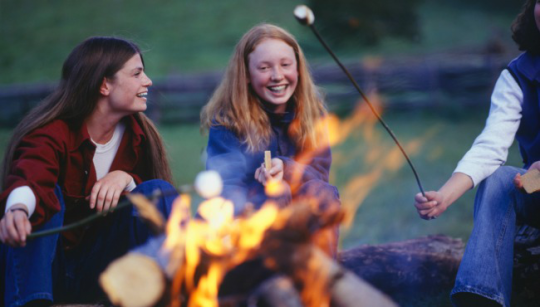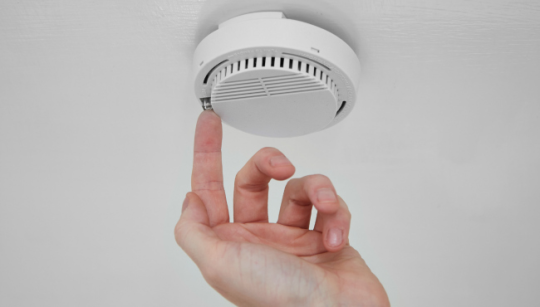With warmer weather and longer days approaching, people throughout Michigan are emerging from their winter cocoons to focus on long-neglected projects like spring cleaning, home repairs, and yard work. Many are also lacing up their shoes for their first outdoor walk or jog of the season. These activities can be extremely beneficial, but they also involve a variety of health and safety hazards that can be avoided with the proper precautions.
To help ensure everyone in our community stays safe this season, E.S.C.A.P.E. Inc. offers the following tips and suggests you post them where they can be seen by your family members and co-workers.
Cleaning for Safety:
Nature is undergoing a fresh start and so are homeowners who are ready to clean up the debris that has been accumulating in basements, storage sheds, and garages over the winter.
- Household and pool chemicals, paints, and poisons should be properly marked and stored under lock and key, away from children’s reach. Dispose of any that are leaking, expired, or that look bad.
- When cleaning up hazardous chemicals wear rubber gloves and follow the safety direction on the packaging. Never mix chemicals in the same container. If you don’t’ know how to dispose of them, seek outside advice. Never put them into the trash or pour down the drain.
- Make sure gasoline and cleaning fluids are well marked and stored in a cool, dry place away from the house and out of the reach of children and pets. Use only approved containers for gasoline storage.
- Never use gasoline to clean skin, clothes, auto parts, or floors.
- Clean up work areas. Put dangerous tools, adhesives, matches, or other work items away from children’s reach.
- Check your barbecue grill for leaks and cracks and be sure to store any propane tanks away from your house and garage.
- Remove all fire hazards, including stacks of rags, newspapers, and magazines. Pay special attention to the spaces around your furnace, hot water tank, fireplace, space heaters, and dryer, as well as under the stairs.
Yardwork Safety:
Itching to get the yard into shape for the summer? Here are ways to help ensure your spring spruce-up is disaster-free.
- Limber up. Yard chores may seem easy, but they involve muscles you probably haven’t used in a while.
- Always wear protective clothing when you handle pesticides and fertilizers.
- More than 60,000 people are treated in emergency rooms each year for lawn-mower injuries.
- Rake before you mow to prevent any stones and loose debris from launching into the air.
- Never operate a mower in your bare feet and avoid wearing loose clothing.
- Never start a mower indoors.
- When refueling your mower, make sure the engine is off and cool. Don’t spill gasoline on a hot engine — and don’t smoke while pouring gasoline.
- Never leave your mower operational while unattended.
- Don’t use electrical mowers on wet grass.
- At least 55,000 people each year sustain injuries from trimmers, lawn edgers, pruners and power saws.
- Read the manufacturer’s instructions carefully before using the tools.
- Inspect the product for damage and don’t use it if there are problems.
- Use proper eye protection.
- Make sure blade guards are in place on all cutting equipment.
- Don’t let tools get wet unless they are labeled “immersible.”
- Unplug all tools when not in use.
- Make sure the tool is in the “off” position before you plug it in.
- Store gasoline-powered equipment away from anything that uses a pilot light.
- Make sure you use the right saw for the task, and always wait for the saw blade to stop before pulling away from a cut to avoid kickback.
- When pruning trees, be careful not to let metal ladders or trimmers contact overhead wires.
- Before you do any “hands on” weed removal, make sure you know how to identify poison ivy, sumac, oak and similar toxic plants. Find out ahead of time how to treat the rashes they cause to reduce the irritation.
Outdoor Safety:
Ready for some outdoor exercise and adventure? Here are a few pointers.
- Winter’s inactive muscles can take only so much strain. Don’t overdo it — build up slowly so you don’t have strains that can put you out of commission for some time.
- It may look appealing, but don’t wander on frozen rivers and lakes in the spring. The ice is beginning to thaw, and you never know just how thin the ice really is.
- Spring’s extra rain and thawing snow can cause normally safe rivers, streams, and creeks to turn treacherous. Even standing on banks can be risky as they can be undercut by rushing water and give in under your weight.
- Springtime is also severe weather time. If the skies look threatening, check to see if a storm watch or warning has been issued before you initiate outdoor activities. If you’re already outside and thunderstorms threaten, go immediately into a building or enclosed vehicle. For tornadoes, go to the nearest safe structure, or the basement or interior first-floor room of your home. If there’s no time to follow these precautions, take cover in a ditch or depression in the ground.
Ladder Safety:
Ready to do some home repairs? On average, about 145,000 people visit the emergency room each year, because of ladder mishaps. Here are a few safety tips:
- Read the manufacturer’s instructions that come with your ladder. They contain guidelines for weight and height limits as well as for the proper use of their product.
- Inspect the ladder before using it to make sure there are no loose or broken rungs.
- Make sure the ladder is the right height for the job. Many accidents happen when people overextend their reach because their ladders are too short.
- Never stand on a ladder’s bucket shelf.
- Make sure the ladder is completely open and that all of its feet are planted on a firm, level surface. Extension ladders should not be placed at an angle that is too extreme.
- Avoid using a metal ladder near electrical sources.
- Face the ladder when climbing down and make sure your weight is centered between the two sides.
“These are just a few of the safety precautions to consider during the spring,” says Michael McLeieer, President of E.S.C.A.P.E. Inc. “It’s also a great time to replace your smoke alarm batteries, make sure your fire extinguishers are placed in proper locations around your home, and ensure you have a working flashlight and battery-powered radio for spring storms. By taking the right precautions when warmer weather beckons, you and those around you can enjoy a safer, healthier spring.”










